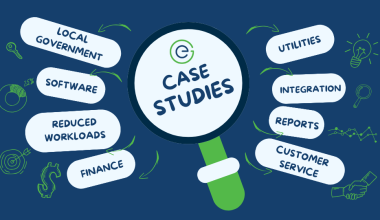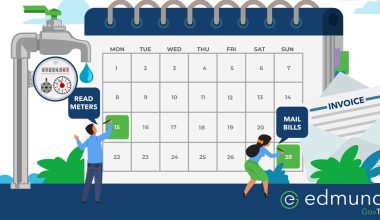Are your customers asking if they can receive their bill electronically rather than receiving a paper bill in the mail? Paperless billing (or ebilling) allows a utility to present its customers with bills in electronic from rather than mailing a traditional paper bill.
Cost savings
The most obvious reason to offer paperless billing is cost savings. The cost to mail a bill includes postage, the bill itself (postcard or full page), envelope for full page bills, any additional inserts (return envelope and bill stuffers), consumables (toner or printer ribbons) and labor to print and prepare bills for mailing.
If you outsource the printing of your bills, these costs are passed on to you from your outsource printer. If you print bills in-house, some of these costs are direct costs (postage, forms, consumables and envelopes). The rest are indirect costs (salary and benefits for the time involved in preparing bills to be mailed).
How much can we save?
For full page bills, the very best automation compatible presort discount is the 5-digit presort rate of $.35. This rate is only available if you mail your bills using CASS certification and all of your bills are mailed to a presorted five digit zip code. Postage rates increase for less specific delivery areas (3-digit zip prefix, AADC, etc). These rates compare to the full first class postage rate of $.45 if you don’t presort. For postcards, the 5-digit presort rate is $.229 and the full first class postage rate is $.32.
For purposes of illustration, let’s use $.50/bill for the total cost of mailing a full page bill. This includes postage, forms, supplies and labor. If you bill monthly, for every customer that elects to stop receiving a paper bill, you will save $6.00 per year!
Customer convenience
For many of your customers, the convenience of being able to receive their bill electronically is key. I can attest to this from personal experience. As someone who travels frequently for work, I have been receiving as many bills as I can electronically for several years. I also pay all of my bills using my bank’s online banking bill pay option. This means I can pay all of my bills while I’m traveling.
Customer adoption rates for e-billing will vary from utility to utility depending on the demographic of your customer base. If your customers make use of online bill pay or pay using IVR, chances are they would also enjoy the convenience of receiving their bill electronically.
Bill presentment options
With e-billing, utilities either attach an image of the bill to an e-mail or send an e-mail letting the customer know their bill is available to be viewed online. Each option has advantages and disadvantages.
The advantage of attaching the bill to an e-mail is the customer doesn’t have to login to a website to view their bill. The disadvantage is producing and attaching a PDF document to an e-mail and the lack of security in attaching a bill to an e-mail.
The advantage of viewing the bill online is requiring your customer to login, so the information is more secure. You can also post more than just the most recent bill online, giving your customers the added convenience of seeing previous month’s bills as well. While the customer is logged in to your website to view their bill, they should also be able to pay it without having to login to another site.
How do we get started?
The first step is to contact your software vendor to see if they offer a paperless billing solution. Once you have that in place, getting your customers to sign up is the next step.
The key to higher adoption rates is to target specific customer groups that would be most likely to take advantage of e-billing. This includes those customers who pay using their bank’s online banking bill pay option, and those who use your online bill pay or IVR payment options. These customers have demonstrated that they are not intimidated by technology and are most likely to embrace paperless billing.
Another way to higher adoption rates is to ask! Have your customer service staff ask every new customer applying for service if they would prefer to receive an e-bill, just like they ask if new customers want to sign up for bank drafts. If you don’t ask every new customer if they want to sign up for bank drafts, you should! It’s the easiest way to collect payments.


